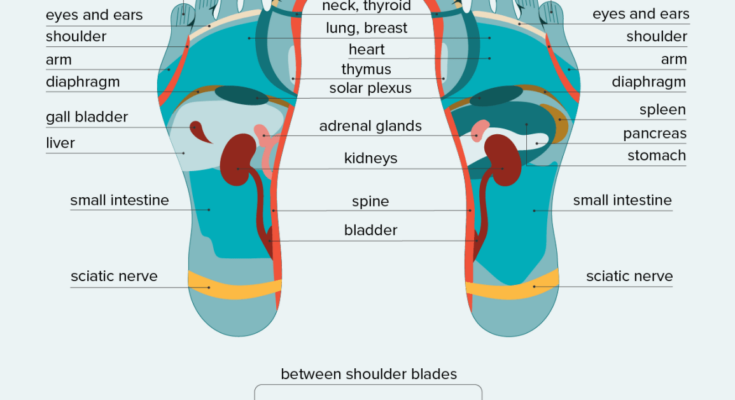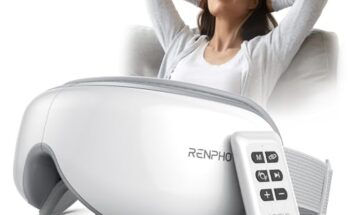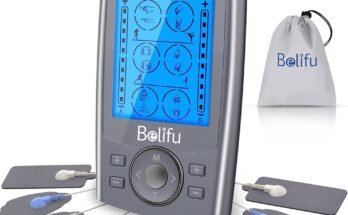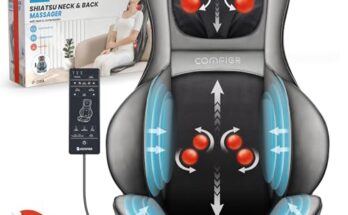Foot massage helps with pain relief by improving blood flow and reducing tension. It stimulates pressure points, easing discomfort and promoting relaxation.
Foot massage has been practiced for centuries. It’s more than just a luxury. It offers significant health benefits. By targeting specific areas on the feet, massage can alleviate pain in other parts of the body. This technique, rooted in ancient traditions, has gained popularity in modern wellness routines.
Whether dealing with chronic pain or occasional discomfort, foot massage can be a natural remedy. Its benefits extend beyond pain relief, contributing to overall wellbeing. Dive in to understand how this simple practice can make a difference in your daily life.

Credit: www.beltsvillefootcare.com
Introduction To Foot Massage
Foot massage is an ancient practice. It has been used for centuries to relieve pain. The technique involves applying pressure to specific points on the feet. This can help to ease pain and promote relaxation. Foot massage is popular worldwide for its numerous health benefits.
Historical Background
Foot massage has a rich history. It dates back to ancient Egypt and China. Historical records show that these cultures used foot massage for healing. They believed it could improve overall health.
In Egypt, tomb paintings show foot massage practices. These paintings date back to 2330 BC. In China, foot massage has been part of traditional medicine for thousands of years. The Chinese used it to balance energy and restore health.
Modern Practices
Today, foot massage is more popular than ever. Many people use it to relieve stress and pain. Modern foot massage techniques combine ancient practices with new methods.
Reflexology is a popular modern practice. It focuses on pressure points on the feet. Each point corresponds to different body parts. Reflexologists believe that stimulating these points can improve health.
Many spas and wellness centers offer foot massage services. They use various techniques, including Swedish and deep tissue massage. These techniques help to relieve tension and promote relaxation.
Foot massage is also used in physical therapy. Therapists use it to treat injuries and chronic pain. It can improve circulation and speed up healing.
Overall, foot massage is a simple yet effective way to manage pain. It has a long history and remains relevant today. Its benefits are supported by both ancient wisdom and modern science.

Credit: craftmassageandwellness.com
Types Of Foot Massage
Foot massage offers various techniques to relieve pain and stress. Different types of foot massage target specific areas and provide unique benefits. Here, we will explore three popular types of foot massage: Reflexology, Shiatsu, and Swedish Massage.
Reflexology
Reflexology is an ancient practice that focuses on specific points on the feet. These points correspond to different organs and systems in the body. By applying pressure to these points, reflexology aims to promote healing and pain relief in the corresponding areas. Reflexology can help with:
- Reducing stress
- Improving circulation
- Alleviating pain
- Enhancing overall well-being
Shiatsu
Shiatsu is a Japanese technique that uses finger pressure to stimulate the body’s energy flow. It works by applying pressure to specific points on the feet, similar to acupuncture but without needles. Shiatsu helps to:
- Relieve muscle tension
- Boost energy levels
- Improve blood flow
- Reduce anxiety
Swedish Massage
Swedish massage is a popular technique that uses long, flowing strokes. It focuses on the muscles and soft tissues of the feet. Swedish massage helps to:
- Relax the muscles
- Reduce pain and stiffness
- Enhance flexibility
- Improve overall relaxation
Each type of foot massage offers unique benefits. Choose the one that best suits your needs.
Pain Relief Mechanisms
Foot massage offers many benefits. One key benefit is pain relief. Understanding the mechanisms of pain relief can help you appreciate the power of a good foot massage.
Nerve Stimulation
Foot massage works by stimulating the nerves. This can help block pain signals. When you massage certain areas of the foot, you activate the nerve endings. These nerve endings send signals to the brain. The brain then releases feel-good chemicals like endorphins.
Endorphins act as natural painkillers. They help reduce pain and improve mood. Nerve stimulation also helps relax the muscles. This can ease tension and reduce discomfort.
Improved Circulation
Another important mechanism is improved circulation. A good foot massage boosts blood flow. Better blood flow means more oxygen and nutrients reach the tissues. This helps speed up healing and reduces pain.
Improved circulation also helps remove waste products from the tissues. This can reduce inflammation and swelling. Less inflammation means less pain. Improved circulation also helps keep the feet warm. This can be very soothing, especially in cold weather.
Overall, these mechanisms work together. They help provide relief from various types of pain. Whether you suffer from chronic pain or just need some relaxation, a foot massage can make a big difference.
Benefits For Specific Conditions
Foot massage is known for its general relaxation benefits. But it also offers targeted relief for specific conditions. Understanding these benefits can help you manage pain better.
Arthritis
Arthritis causes joint pain and stiffness. Foot massage can help reduce this pain. Gentle pressure and movements improve blood flow. This reduces inflammation in the joints. Regular foot massages can make daily activities easier for arthritis patients.
Plantar Fasciitis
Plantar fasciitis leads to heel pain due to inflamed tissues. A foot massage targets the plantar fascia. It eases tension in the tissue. This helps reduce pain and promotes healing. Regular sessions can prevent the condition from worsening.
Neuropathy
Neuropathy affects the nerves, causing pain and numbness. Foot massage can help stimulate nerve endings. This improves sensation and reduces pain. It also increases blood circulation. Consistent massages can enhance overall foot health for neuropathy patients.
Mental Health Benefits
Foot massage helps relieve pain by improving blood circulation and reducing muscle tension. It also promotes relaxation and decreases stress levels.
Foot massages do more than just relieve physical pain. They also offer significant mental health benefits. People often overlook how interconnected the body and mind are. Foot massages help in reducing stress and improving sleep quality. These benefits play a crucial role in overall mental well-being.Stress Reduction
Foot massages can significantly reduce stress levels. Stress often builds up in the muscles and joints. Massaging the feet helps to release this tension. This can lead to a more relaxed state of mind. It also promotes the release of endorphins. These natural chemicals help to improve mood and reduce anxiety.Improved Sleep
Foot massages can improve sleep quality. Many people suffer from insomnia due to stress and anxiety. A relaxing foot massage before bed can help. It soothes the nervous system and promotes relaxation. This makes it easier to fall asleep and stay asleep. Better sleep leads to improved mental health and well-being. “`Diy Foot Massage Techniques
Foot massage is a simple way to reduce pain. You can do it yourself at home. It helps to know some techniques. These can make a big difference in how you feel. Let’s look at some effective DIY foot massage techniques.
Using Tools
Tools can make foot massage easier. A tennis ball works well. Roll it under your foot. This helps to release tension. You can also use a foot roller. It targets specific points on your foot. Another option is a massage stick. It helps to reach deeper muscles.
Hand Techniques
Your hands are powerful tools. Use your thumbs to apply pressure. Focus on the arches and heels. Rub in circular motions. This improves blood flow. You can also use your knuckles. Press them into the soles of your feet. This releases tight muscles. Stretch your toes back and forth. This relieves tension. Simple and effective.
Professional Foot Massage
Foot massage alleviates pain by improving blood flow and reducing muscle tension. It also stimulates pressure points, promoting overall relaxation.
A professional foot massage can provide significant pain relief. Skilled therapists use their knowledge to target specific areas. This can help alleviate pain and improve overall well-being.Finding A Therapist
Finding a qualified foot massage therapist is crucial. You should look for certified professionals. Recommendations from friends or family can be valuable. Online reviews also help in making a decision. Ensure the therapist has experience with foot pain relief.What To Expect
During a professional foot massage, you will first discuss your pain areas. The therapist will then focus on these spots. They use various techniques to relieve tension. The session usually lasts between 30 minutes to an hour. You may feel immediate relief or need multiple sessions. Foot massages can be deeply relaxing. You might even fall asleep during the session. The therapist will ensure you are comfortable throughout. After the massage, drink plenty of water. This helps to flush out toxins released during the massage. Regular foot massages can greatly improve your quality of life. They can reduce pain and increase mobility. Investing in professional foot massages can be a wise decision for your health. “`Precautions And Contraindications
Foot massage can be a great way to relieve pain. But it’s important to know when it might not be safe. Here are some precautions and contraindications to consider.
When To Avoid
There are times when you should avoid foot massage. If you have open wounds, it’s best not to get a foot massage. Massaging an injured area can make it worse.
- Infections: If you have a foot infection, avoid massage. It can spread the infection.
- Blood Clots: If you have a history of blood clots, talk to your doctor first.
- Fractures: If your foot is broken or sprained, do not get a massage.
Consulting A Doctor
It’s important to consult a doctor before getting a foot massage if you have certain conditions. Here’s a table to help you understand better:
| Condition | Why Consult a Doctor? |
|---|---|
| Diabetes | Diabetics have sensitive feet. A doctor can guide safe practices. |
| Circulatory Issues | Poor circulation can complicate a foot massage. Get medical advice first. |
| Pregnancy | Pregnant women should seek advice. Certain pressure points might be unsafe. |
Listen to your body. If something feels wrong, stop the massage. Consulting a healthcare professional can prevent complications.

Credit: www.amazon.com
Frequently Asked Questions
What Are The Benefits Of Foot Massage For Pain Relief?
Foot massage helps reduce tension, improves circulation, and alleviates pain. It stimulates pressure points, promoting relaxation and healing.
How Often Should You Get A Foot Massage?
Getting a foot massage once or twice a week can help maintain pain relief. Regular sessions enhance overall well-being.
Can Foot Massage Relieve Chronic Pain?
Yes, foot massage can relieve chronic pain. It targets specific points, reducing discomfort and improving mobility over time.
Does Foot Massage Help With Joint Pain?
Foot massage can help reduce joint pain. It improves blood flow and decreases inflammation, promoting joint health.
Conclusion
Foot massage offers a natural way to relieve pain. It boosts blood flow. This helps reduce tension and stress. Many find it relaxing and soothing. Regular foot massages can improve overall well-being. They’re easy to do at home. Consider adding foot massages to your routine.
Your feet will thank you.



